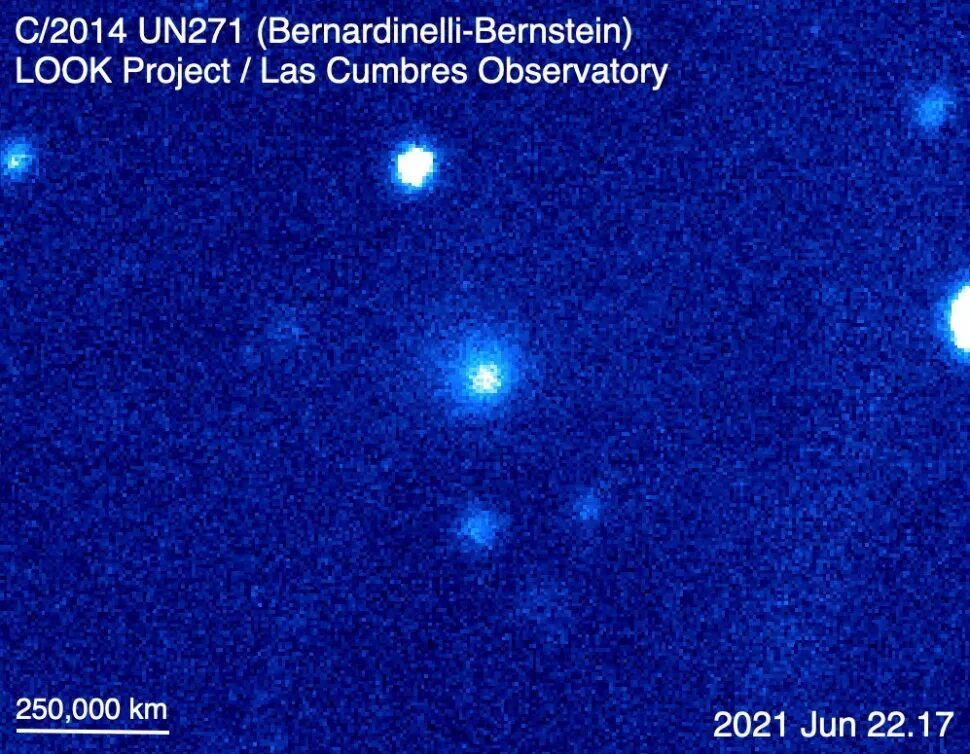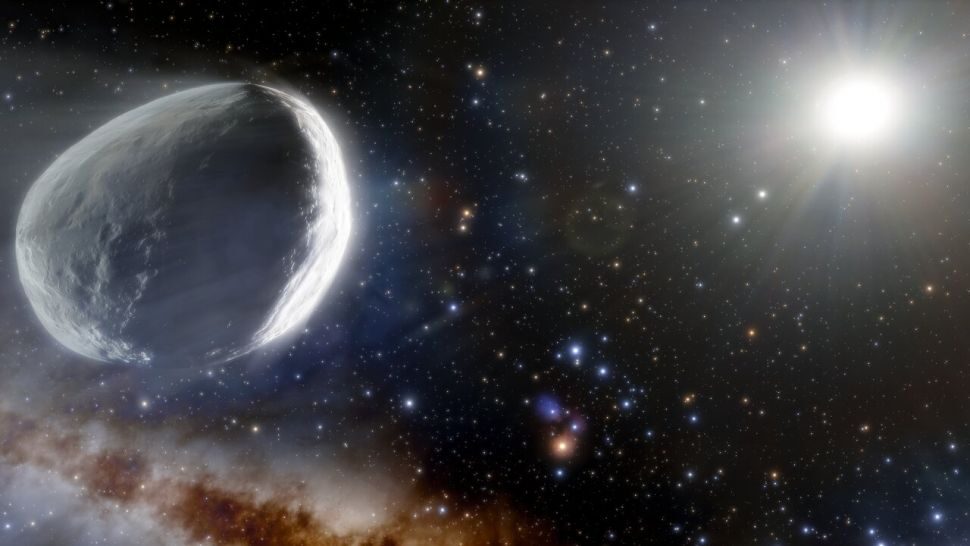
Astronomers in New Zealand were the first to spot a coma, or zone of gas and dust, spreading around the megacomet C/2014 UN271, also known as Bernardinelli-Bernstein, which may be 1,000 times more massive than a typical comet. It could be the most massive comet ever found in all of recorded history.
The team that monitors images captured by the Las Cumbres Observatory (LCO) is spread around the world, and images from one of LCO's 1-meter telescopes hosted at the South African Astronomical Observatory were available on June 23 at midnight EDT (0400 GMT). That happens to be afternoon in New Zealand.
"The other folks were asleep," recalled LCO team member Michele Bannister, of New Zealand's University of Canterbury, in a statement released Wednesday (July 14).
At first glance, however, she thought the new imagery was a bust, thanks to the ever-present problem of satellites going through the field of view of telescopes.
"The first image had the comet obscured by a satellite streak, and my heart sank," she continued. "But then the others were clear enough, and gosh: there it was, definitely a beautiful little fuzzy dot, not at all crisp like its neighboring stars."
What caught Bannister's attention was a foamy coma emerging at an incredible distance from the sun. When the image was taken, Bernardinelli-Bernstein was about 19 astronomical units (AU) from the sun. (One AU is the average Earth-sun distance — about 93 million miles, or 150 million kilometers). That's roughly double the orbital distance of Saturn from the sun. Solar energy at that juncture is a fraction of what we enjoy here on Earth.
That said, the comet has a lot of mass available to heat up. Bernardinelli-Bernstein's huge core (or nucleus) is estimated to be more than 62 miles (100 km) in diameter, which is three times as large as the next-known largest comet nucleus — that of Comet Hale-Bopp, a famous naked-eye comet that passed by Earth in 1998. Unfortunately for eager astronomers, however, Bernardinelli-Bernstein won't get very close to our planet for observations.
Comment: A comet's coma is due to electric discharge activity: Comet 67P surprises scientists with 'bright outbursts', collapsing cliffs and rolling boulders during Rosetta mission
Bernardinelli-Bernstein's closest approach to the sun will still be beyond Saturn in January 2031, but astronomers have a decade to plan for that approach. If history is any guide, telescopes around the world and in space, along with any spacecraft that happen to be nearby, will peer at the comet to learn as much as possible about its composition and history.

"There are now a large number of surveys, such as the Zwicky Transient Facility and the upcoming Vera C. Rubin Observatory, that are monitoring parts of the sky every night," LOOK member Tim Lister, an LCO staff scientist, said in the same statement.
"These surveys can provide alerts if one of the comets changes brightness suddenly," he added. "Then we can trigger the robotic telescopes of LCO to get us more detailed data, and a longer look at the changing comet while the survey moves onto other areas of the sky."



Comment: See also:
- Volcanoes, Earthquakes And The 3,600 Year Comet Cycle
- Sott Exclusive: Nemesis, not 'Nibiru' - Clarifying mainstream reports about 'a large ninth planet' that periodically sends comets our way
- Planet-X, Comets and Earth Changes by J.M. McCanney
And check out SOTT radio's: